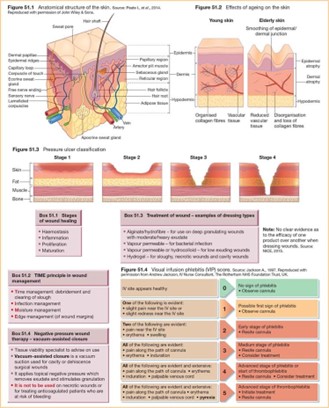A nursing diagnosis of "Risk for Deficient Fluid Volume" related to excessive fluid loss, secondary to diarrhea and vomiting was implemented for a home health client who began with these symptoms 5 days ago. A goal was set that the client's symptoms would be eliminated within 48 hours. The client is being seen after a week and has had no diarrhea or vomiting for the past 5 days. What should the nurse do?
Document that the potential problem is being prevented from recurring.
Document that the problem has been resolved and the goal has been met.
Assume that whatever the cause was, the symptoms may return, but the goal was met.
Keep the problem on the care plan in case the symptoms return.
The Correct Answer is B
The nursing diagnosis was "Risk for Deficient Fluid Volume" related to excessive fluid loss, secondary to diarrhea and vomiting. The goal was set that the client's symptoms would be eliminated within 48 hours. The client is being seen after a week and has had no diarrhea or vomiting for the past 5 days, indicating that the problem has been resolved. Therefore, the nurse should document that the problem has been resolved and the goal has been met.
Nursing Test Bank
Naxlex Comprehensive Predictor Exams
Related Questions
Correct Answer is D
Explanation
A stage II pressure ulcer is a wound that involves partial-thickness loss of skin. The most appropriate NANDA nursing diagnosis problem statement for a client with this condition would be Impaired Skin Integrity. This diagnosis reflects the fact that the client's skin has been damaged and is no longer intact. Risk for Injury, Altered Tissue Perfusion, and Impaired Tissue Integrity are also NANDA nursing diagnoses, but they are not as specific or relevant to the client's condition as Impaired Skin Integrity.

Correct Answer is B
Explanation
The first action the nurse should take in this situation is to rescue the client from immediate danger. This means ensuring that the client is safely removed from the room and away from the fire. The safety of the client is the top priority in this situation. Once the client is safe, the nurse can then take further actions such as activating the fire alarm system and attempting to extinguish the fire if possible.
Whether you are a student looking to ace your exams or a practicing nurse seeking to enhance your expertise , our nursing education contents will empower you with the confidence and competence to make a difference in the lives of patients and become a respected leader in the healthcare field.
Visit Naxlex, invest in your future and unlock endless possibilities with our unparalleled nursing education contents today
Report Wrong Answer on the Current Question
Do you disagree with the answer? If yes, what is your expected answer? Explain.
Kindly be descriptive with the issue you are facing.
